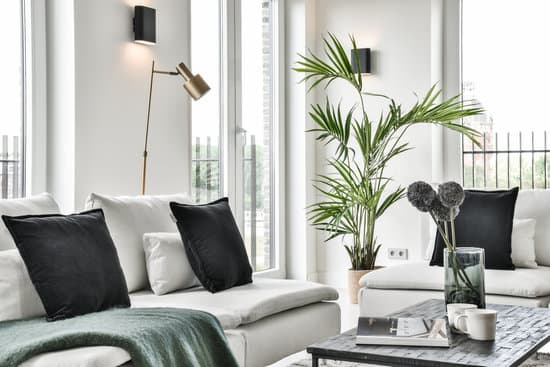The year 1949 marked a significant period in American history, right at the end of the post-war era, where a sense of hope and optimism filled the air. This was reflected in the design and decor trends of the time, as people sought to create comfortable and stylish homes after years of wartime austerity.
In this article, we will delve into how a new home built in 1949 would be decorated, exploring everything from color palettes to furniture styles, textiles, decorative accents, and more.
During this post-war period, there was a shift towards more modern and functional designs in interior decor. The style embraced simplicity and clean lines while incorporating elements of nature and traditional craftsmanship. How would a new home built in 1949 be decorated? Let’s take a closer look at the historical context and design trends that shaped the interiors of homes during this time.
From popular colors used in interior design to typical furniture pieces found in homes built in 1949, we will explore all aspects that contributed to creating the distinctive look of homes during this era. Additionally, we will discuss materials and patterns commonly used in upholstery and drapery, as well as popular accessories and decorative items found in homes of this period.
By understanding the design principles of 1940s decor, we can gain valuable insight into how to incorporate these timeless trends into modern homes today.
Historical Context
In 1949, the world was slowly recovering from the aftermath of World War II, and this period had a significant impact on design and decor trends. The late 1940s marked a return to simplicity and functionality in interior design, as people sought comfort and stability after years of turmoil. The prevalent design aesthetic focused on clean lines, minimalism, and a sense of optimism for the future.
During this time, there was a shift towards modernism in interior design, with an emphasis on practicality and efficiency. The concept of “form follows function” became increasingly popular, influencing furniture styles and architectural designs. This approach led to the rise of streamlined furniture pieces that were both visually appealing and highly functional.
In terms of decor trends, the late 1940s saw a departure from the ornate styles of previous decades. Instead, there was a preference for simplicity and organic shapes in decorative elements. Designers embraced natural materials such as wood, metal, and glass to create a sense of unity between the interior space and the surrounding environment. Overall, the design and decor trends of 1949 reflected a desire for modernity and adaptability in the post-war era.
Color Palette
The color palette of interior design in 1949 was heavily influenced by the post-war era. Soft, muted tones were popular, reflecting a desire for peace and tranquility after the tumultuous war years. Pastel shades such as baby blue, pale pink, and mint green were commonly used in interior spaces. These colors helped to create a sense of calm and serenity within the home, providing a stark contrast to the chaos of the war.
Neutral Hues
Neutral colors like beige, cream, and gray were also widely used in interior design during this time period. These subtle hues created a sense of elegance and sophistication while allowing for versatility in decor. Neutral walls and furnishings served as a backdrop for bolder decorative accents, allowing homeowners to easily update their space with new accessories.
Pop of Bold Colors
In addition to pastels and neutrals, bold colors such as vibrant reds, deep blues, and rich greens were utilized as accent colors in 1949 interior design. These bold hues added an element of energy and vibrancy to the space while still maintaining an overall sense of harmony. Whether incorporated through accent furniture pieces or decorative accessories, these bold colors brought personality and flair to home decor.
Overall, the color palette of interior design in 1949 was characterized by a delicate balance between soft pastels, elegant neutrals, and striking bold hues. This combination reflected the desire for both tranquility and excitement in the home after the challenges of wartime. Today, incorporating these vintage color trends into modern homes can add a touch of nostalgia while still remaining relevant and stylish.
Furniture Styles
When it comes to decorating a new home built in 1949, furniture styles play a crucial role in capturing the essence of the time period. The late 1940s saw a shift towards more streamlined and functional furniture designs, influenced by the post-war era and a desire for simplicity. Here are some typical furniture pieces found in homes built in 1949:
1. Mid-Century Modern: One of the most iconic furniture styles of the late 1940s is mid-century modern. Characterized by clean lines, organic forms, and sleek silhouettes, mid-century modern furniture was all about simplicity and functionality. Pieces like tapered-leg sofas, low-profile lounge chairs, and teak sideboards were popular choices for 1940s homes.
2. Art Deco Revival: While the original Art Deco movement peaked in the 1920s, there was a revival of this style in the late 1940s. Homeowners often incorporated elements of Art Deco into their interiors with geometric patterns, bold colors, and sleek, glossy surfaces. Furniture pieces such as curved armchairs, mirrored coffee tables, and lacquered cabinets reflected this design trend.
3. Traditional Styles: Despite the emergence of modern design influences, many homes built in 1949 still featured traditional furniture styles. Pieces such as Queen Anne chairs, Chippendale dining sets, and ornate carved wood cabinets were favored by those who preferred a more classic and formal aesthetic.
When considering how to decorate a new home built in 1949 or integrate elements of this era into a modern setting, it’s important to embrace these distinct furniture styles that defined interior design during this time period.
Textiles and Fabrics
When it comes to the textiles and fabrics used in upholstery and drapery in homes built in 1949, there were some distinct trends that defined the era. The post-war period saw a shift towards more practical and durable materials, as well as an embrace of new synthetic fabrics.
One commonly used material for upholstery during this time was tweed, which provided a classic and timeless look to furniture pieces. It was often seen in earthy tones like brown, tan, and olive green, adding a sense of warmth and comfort to the home. Additionally, leather upholstery was also popular, exuding a sense of luxury and durability.
In terms of drapery, heavy fabrics like velvet and brocade were common choices for adding a touch of elegance to the windows. These fabrics often featured intricate patterns such as floral designs or geometric motifs, further enhancing the overall aesthetic of the room.
To incorporate these 1949 fabric trends into a modern home, consider using contemporary versions of these materials in your decor. Opt for tweed-style upholstered furniture in neutral tones for a sophisticated yet cozy feel. When it comes to drapery, choose heavy fabrics with subtle patterns to add a touch of vintage-inspired elegance to your windows.
- Consider using tweed or leather upholstery
- Choose heavy fabrics like velvet or brocade for drapery
- Opt for earthy tones and subtle patterns
Incorporating these materials and patterns from 1949 into your modern home can create a timeless and classic look that pays homage to the design trends of the post-war era.
Decorative Accents
In 1949, the decorative accents found in homes were a reflection of the post-war optimism and the growing interest in modern design. The popular accessories and decorative items embraced clean lines, geometric shapes, and a mix of traditional and contemporary elements.
One of the most iconic decorative accents of this era was the use of abstract art pieces, such as paintings and sculptures, to add a touch of sophistication and artistic flair to the home. Additionally, decorative ceramics, particularly those with bold colors and abstract patterns, were also widely used to bring a sense of style and uniqueness to interior spaces.
Another key element in 1949 home decor was the incorporation of sleek metal accents. Items such as chrome table lamps, stainless steel barware, and brass figurines were commonly used to add a touch of elegance and modernity to various rooms. Mirrors with metallic frames were also popular as they not only served a functional purpose but also enhanced the visual appeal of living spaces by reflecting light and creating an illusion of more space.
In terms of decorative textiles, homes built in 1949 often featured bold-patterned throw pillows, rugs with geometric designs, and curtains with vibrant prints. The use of these textiles helped to infuse energy and personality into interiors while complementing the overall color scheme and furniture styles. Additionally, decorative elements inspired by nature such as botanical motifs on wallpaper or upholstery added a sense of freshness and brought the outdoors inside.
| Decorative Accents | Description |
|---|---|
| Abstract Art Pieces | Pieces like paintings & sculptures added sophistication & artistic flair. |
| Sleek Metal Accents | Chrome table lamps & stainless steel barware added elegance & modernity. |
| Decorative Textiles | Bold-patterned throw pillows & curtains with vibrant prints infused energy into interiors. |
Kitchen and Dining Room
The kitchen and dining room were the heart of the home in 1949, as families gathered to share meals and create memories. The design and decor of these spaces reflected the post-war optimism and focus on functionality.
Design
In 1949, kitchens were designed for efficiency and practicality. Built-in cabinets and appliances became more common, allowing for a streamlined look that maximized space. The layout often included a “work triangle” between the stove, sink, and refrigerator, making meal preparation more convenient. Dining rooms were often connected to the kitchen, creating an open flow between cooking and dining areas.
Decor
The decor of kitchens and dining rooms in 1949 featured clean lines and simple yet cheerful color schemes. Pastel shades such as mint green, pink, and baby blue were popular choices for walls and accents. Additionally, linoleum flooring with bold patterns or checkerboard designs added a touch of whimsy to these spaces. In terms of furniture, chrome was a favorite material for dinette sets and tables due to its durability and modern aesthetic.
Functional Details
Functional elements also played a key role in the design of kitchen and dining room decor from 1949. As families spent more time in these spaces, storage solutions such as built-in shelves for dishes and glassware became essential. Additionally, colorful appliances like refrigerators and stoves added a playful touch to the overall design.
Bringing elements of 1949 decor into a modern home can add a sense of nostalgia while still feeling fresh. Consider incorporating vintage-inspired linoleum flooring or adding pastel accents to your kitchen walls for a retro vibe that pays homage to this iconic era in design history. Embracing the simplicity and functionality of 1940s kitchen design can bring a timeless charm to your home while honoring the traditions of this post-war period.
Tips for Incorporating 1949 Decor in a Modern Home
When decorating a modern home with a touch of 1949 decor, it’s important to strike the right balance between vintage charm and contemporary style. One way to incorporate 1940s design elements into a modern home is by mixing and matching furniture pieces. For example, you can pair a sleek, modern sofa with a vintage-inspired coffee table or accent chair. This juxtaposition of old and new creates an eclectic and visually interesting aesthetic.
Another way to infuse 1949 decor into a modern home is through the use of color. The late 1940s saw a shift towards brighter and bolder color palettes, so consider incorporating vibrant hues like turquoise, mustard yellow, or coral into your interior decor. Whether it’s through accent walls, throw pillows, or artwork, these pops of color can add a nostalgic touch to your space while still feeling fresh and contemporary.
In addition to furniture and color, you can also integrate 1940s design elements through decorative accents. Look for vintage-inspired accessories such as mid-century ceramics, retro clocks, geometric patterns, and atomic-age light fixtures to enhance the overall ambiance of your home. By carefully selecting and curating these pieces, you can evoke the essence of 1949 in a way that feels authentic yet relevant to today’s interiors.
Conclusion
In conclusion, the year 1949 marked a significant period in design and decor as it reflected the post-war optimism and innovation. The late 1940s saw a departure from the austerity of wartime and an embrace of bold colors, sleek furniture, and modern design elements.
The color palette of this era consisted of vibrant hues such as turquoise, coral, and chartreuse, which added a sense of vibrancy to interior spaces. Additionally, typical furniture pieces included streamlined sofas, atomic-inspired coffee tables, and Scandinavian-inspired chairs, showcasing a blend of functionality and aesthetic appeal.
The textiles and fabrics commonly used in upholstery and drapery during this time were characterized by geometric patterns and modern prints. Decorative accents such as ceramic figurines, glassware with atomic motifs, and abstract art added personality to homes built in 1949. Furthermore, the kitchen and dining room served as focal points in these homes, featuring bright linoleum floors, metal cabinets with chrome hardware, Formica countertops, colorful appliances, and sleek dinette sets.
While the design trends of 1949 have evolved over time, they continue to inspire modern interior decor. By incorporating elements such as mid-century furniture pieces, retro textiles or vintage decorative accents into contemporary settings, homeowners can infuse their spaces with the timeless allure of 1940s design.
Whether it’s adding a pop of vibrant color or integrating sleek lines and geometric patterns into decor schemes, the influence of this era continues to resonate in interior design today. As we look back on the design trends of 1949, we are reminded that great style is truly timeless.
Frequently Asked Questions
How to Style a 1940s House?
Styling a 1940s house involves embracing its retro charm while updating it with modern touches. Consider adding vintage furniture, using color schemes popular during that era, and incorporating Art Deco or Mid-Century Modern design elements.
What Design Style Was Popular in the 1940s?
The design style that was popular in the 1940s was influenced by the aftermath of World War II. This period saw the rise of Art Deco, Minimalism, and Mid-Century Modern design. These styles emphasized sleek lines, geometric shapes, and simplicity.
Is It Safe to Buy a House Built in 1950s?
Buying a house built in the 1950s can be safe as long as it has been well-maintained and meets current safety standards. It’s important to have a thorough home inspection to check for any potential issues related to electrical wiring, plumbing, and structural integrity.

I’m thrilled to be your companion on this exciting journey through the world of home decor and design. With a passion for turning houses into homes and a keen eye for the finer details, I’m here to help you transform your living spaces into beautiful, functional, and meaningful havens.





